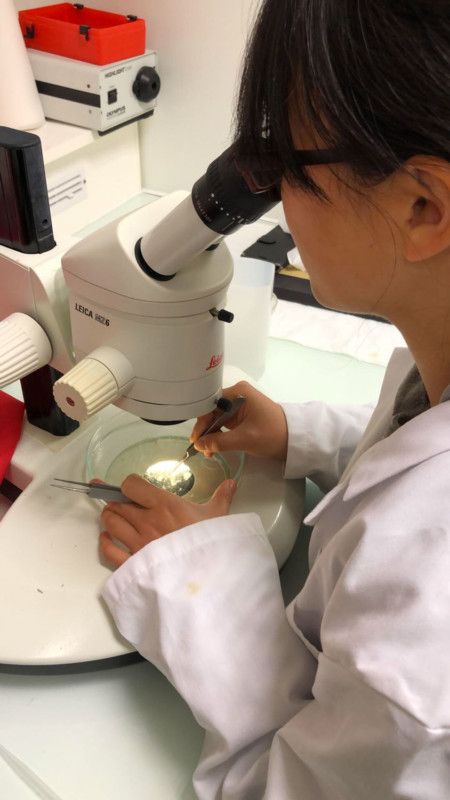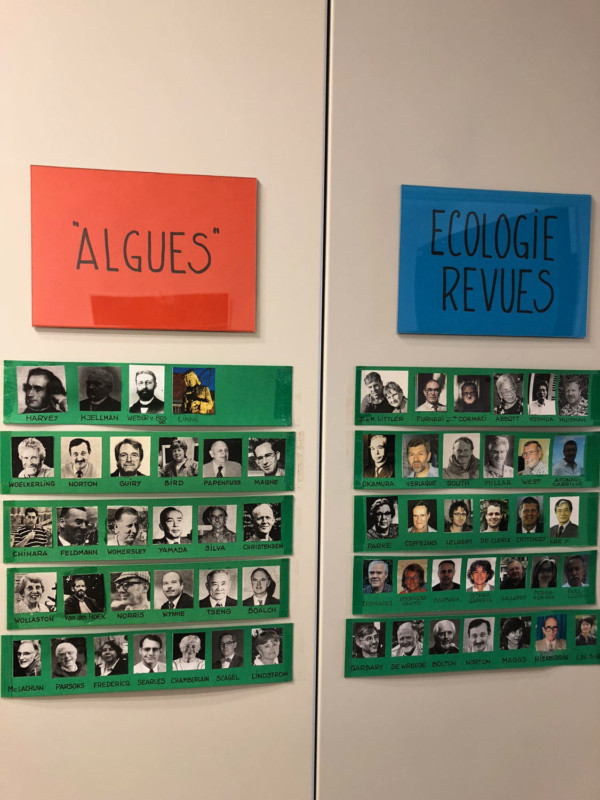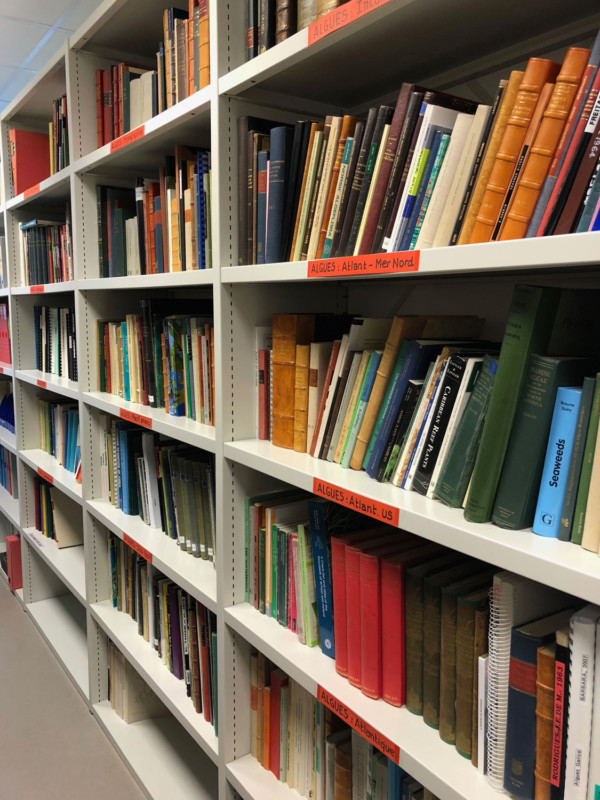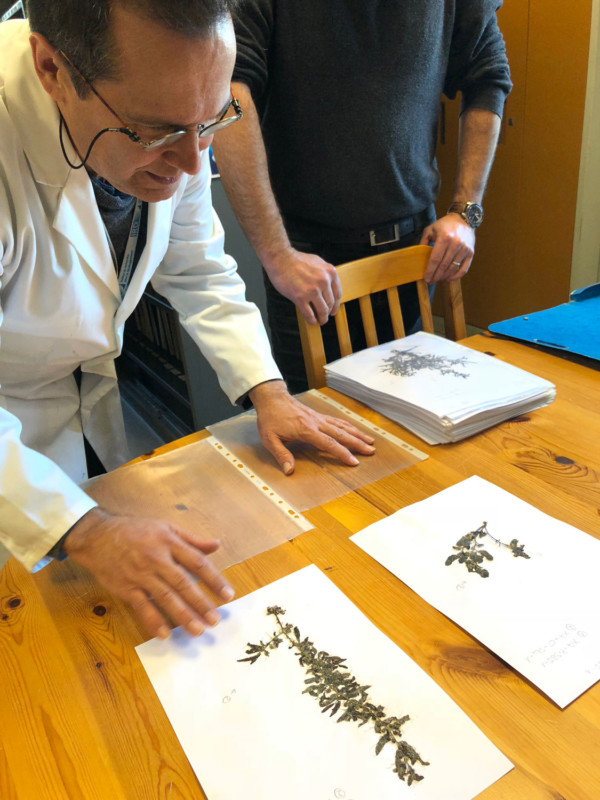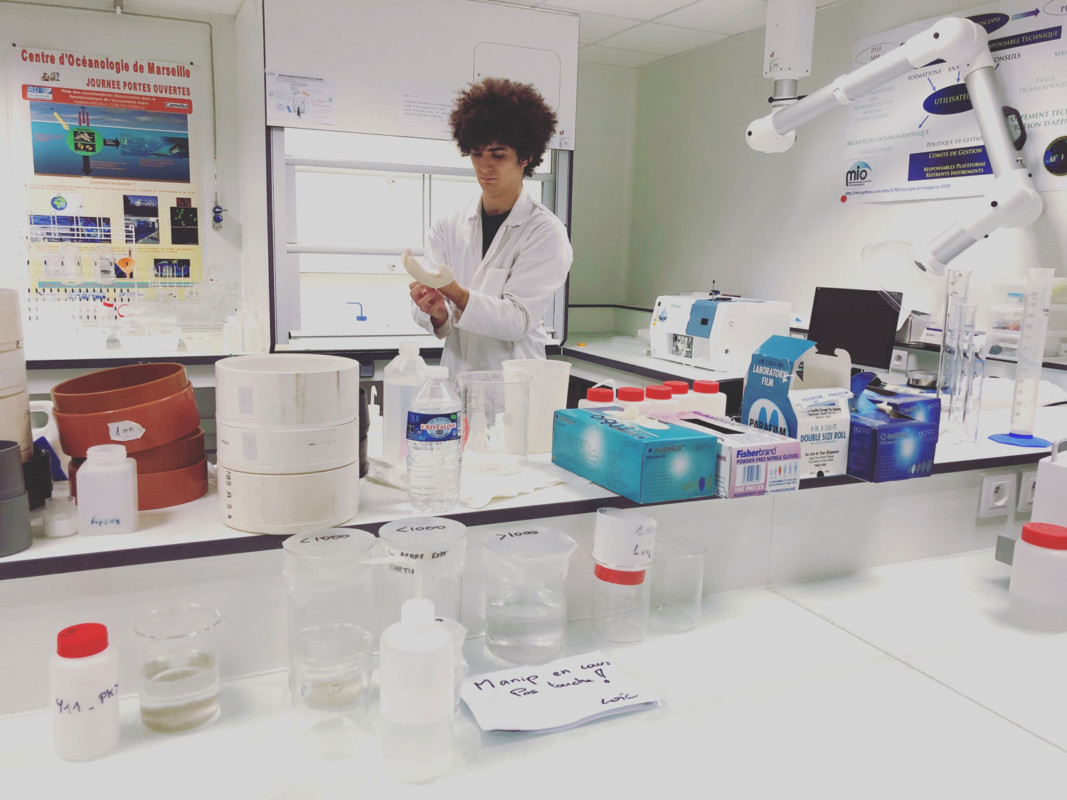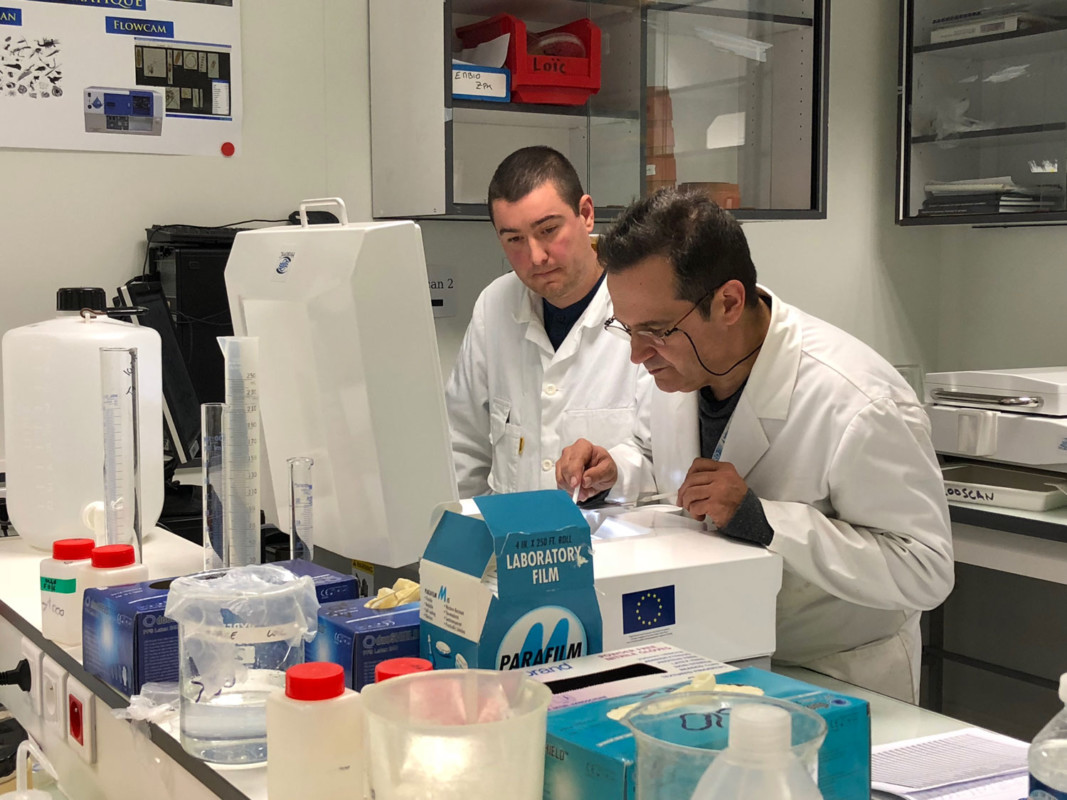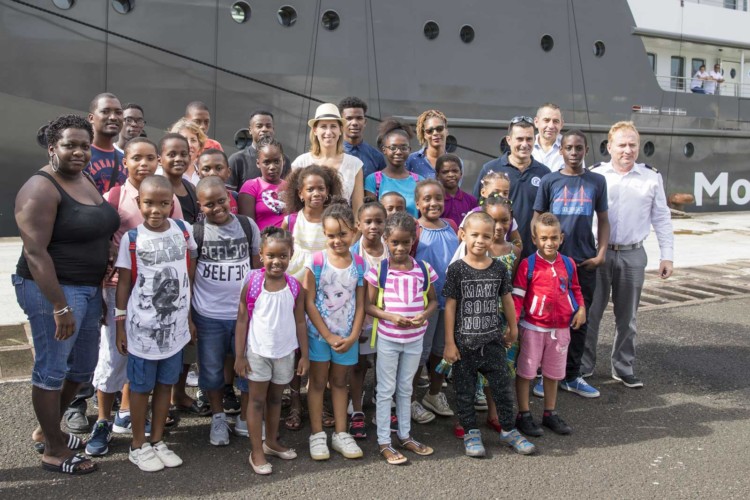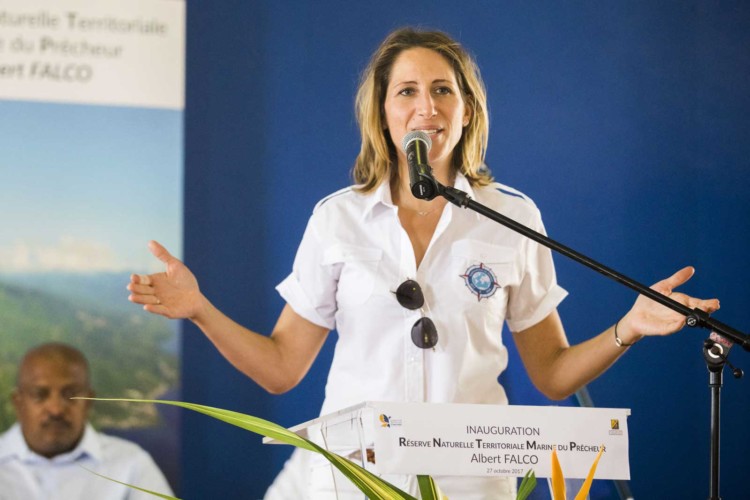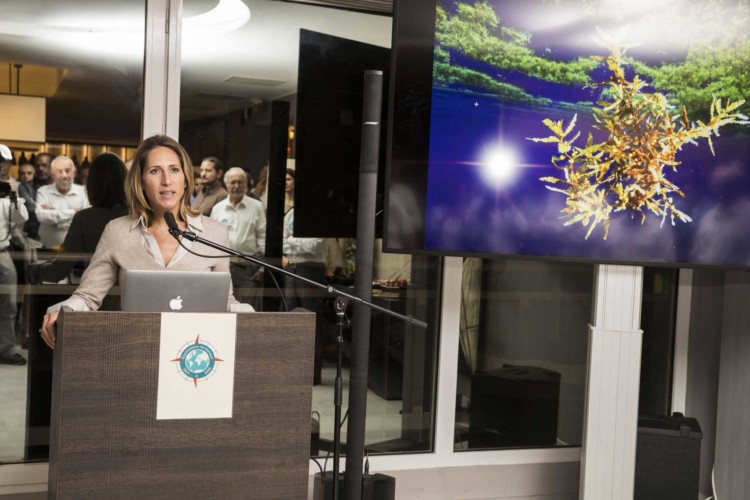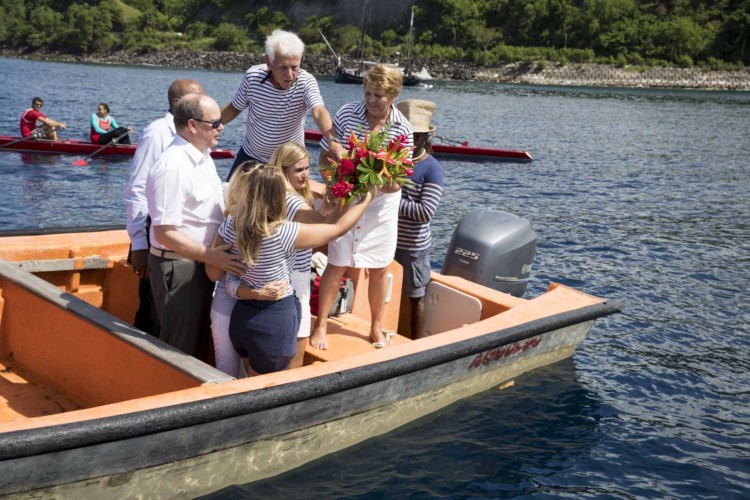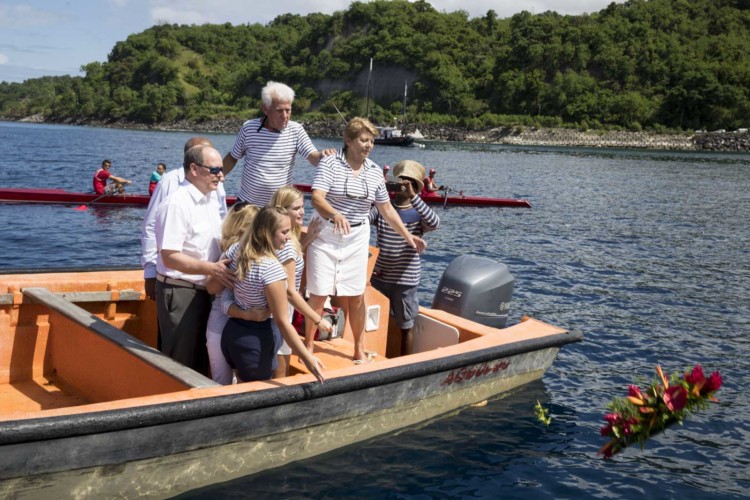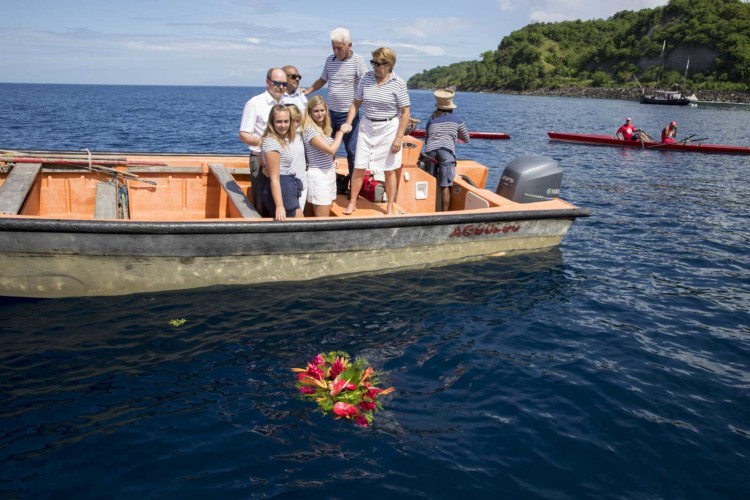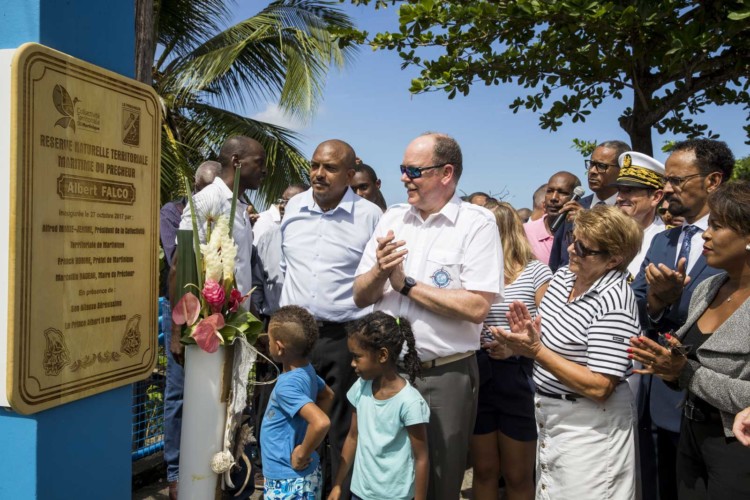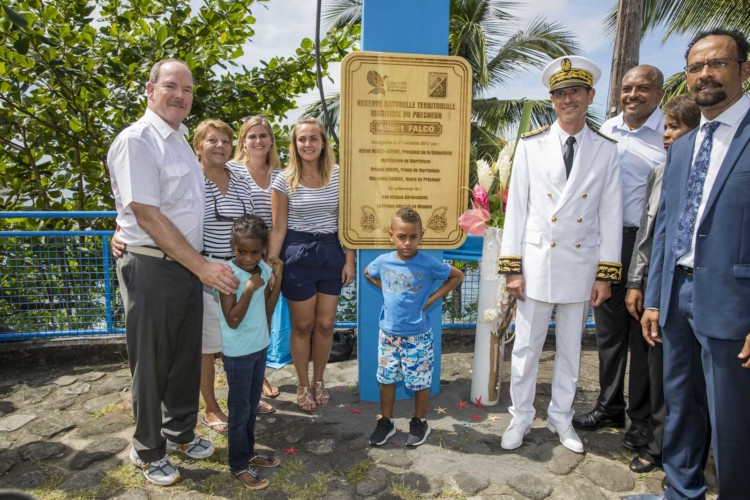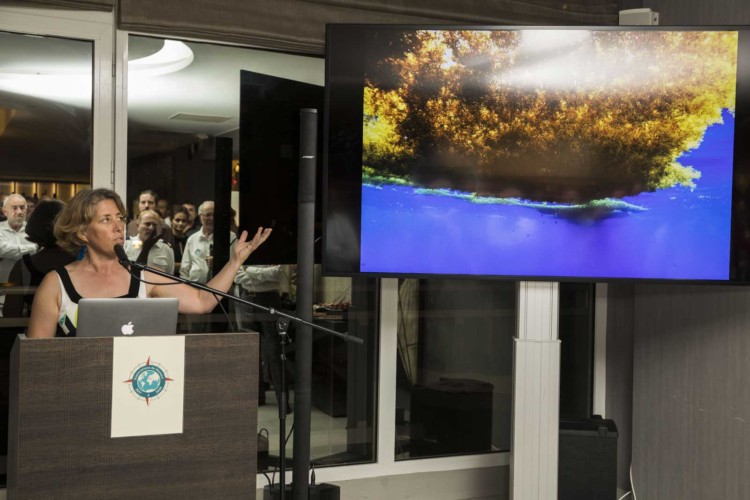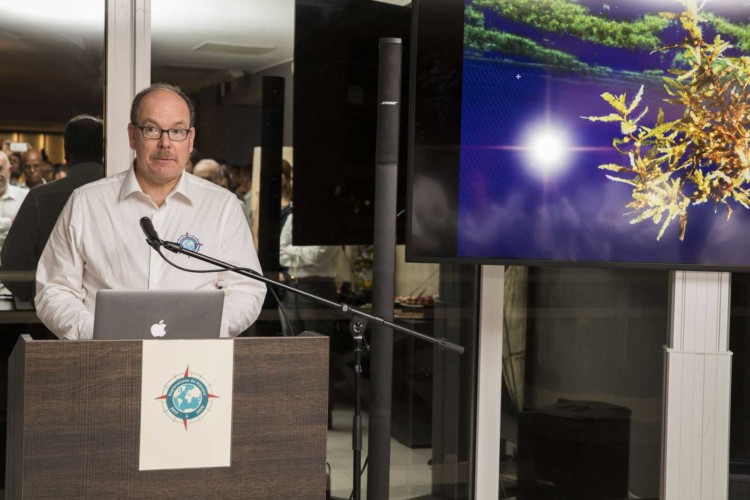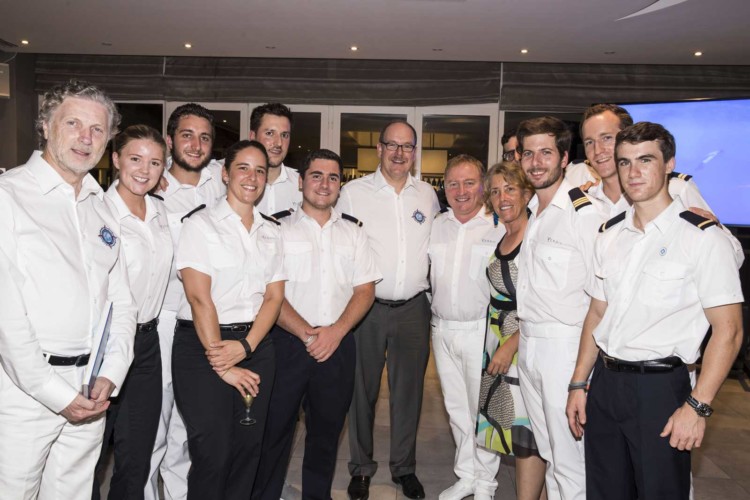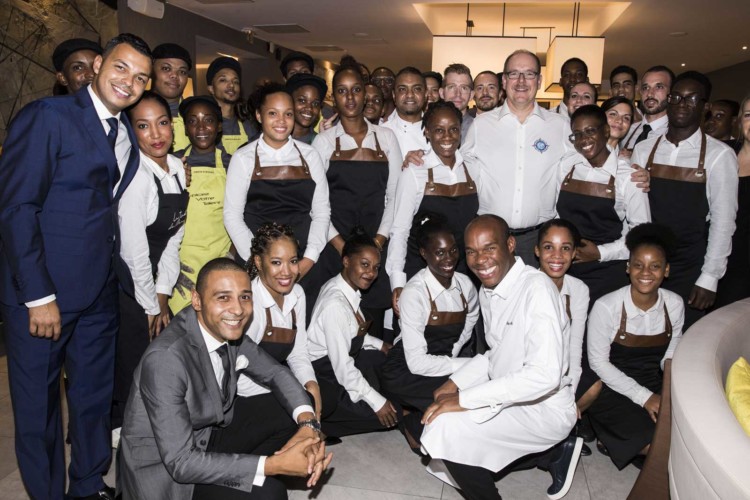We interviewed Thomas Changeux last year in October when he and his team from the Mediterranean Institute of Oceanology from Aix-Marseille University began their mission across the Atlantic Ocean with Monaco Explorations.
After arriving in Martinique and giving a presentation with HSH Prince Albert of Monaco, the team went back to their laboratories in their beautiful new green building at the university and began to catalogue and analyze the samples they took from the 18 stations across the Atlantic.

To give you an idea of what the team is researching, Thomas answered a few questions again.
Why is studying Sargassum important?
Sargassum, which are brown algae, have begun to multiply in a tremendous way in tropical Atlantic since 2011. This is recent enough that we can say it is a new phenomenon, which has big repercussions, particularly in the French West Indies. These islands have seen many large masses stranded on their beaches starting in 2011. The masses severely affect the coastal marine ecosystem. Standing at the surface it prevents light coming through, and alter the photosynthesis process. After a few days accumulating in the water, the masses have also a deoxygenating effect, which can kill the fish and fauna. When accumulated at beach, the Sargassum starts to ferment and emit high levels of hydrogen sulfide gas, which not only smells terrible, but also is poisonous and corrosive. This presents human health risks at shore communities and the corrosive nature of the gas gets trapped in the water molecules in the air and destroys nearby electrical circuits. For these reasons and more, it is obviously pressing and important to discover why the Sargassum is multiplying at such an alarming rate.
Are the Sargassum only harmful at the shore? What about in the sea?
There are studies that have been done on the Sargasso Sea in the north Atlantic but this new tropical accumulation of Sargassum multiplying since 2011 has not really been studied much. It is a nursery habitat for fish where the can feed on the zooplankton. In facts, Sargassum rafts create a whole ecosystem and we are looking to understand not only why they are growing, but also what the effects are on the open ocean.
We are able to see these growing masses in the sea in satellite images, but it requires a mission like Monaco Explorations to be able to go and collect samples on the field. We are not the only ones doing it, but there are not too many other missions focused on this due to the difficulty of traveling in the open sea, things like availability of vessels with laboratories, cost, etc.
Is there a solution to the Sargassum problem?
We don’t know yet, first we need to understand more of what is going on. There are other teams that work on the valorization of the Sargassum. Perhaps these masses can be used for fertilization but it needs to be rinsed or treated first because it holds a lot of salt, which isn’t compatible with the soil. There are other valorizations opportunities but, like I’ve said, the research is fairly new. It’s quite complicated, and of course this is the long-term goal – to find a solution.
Do you have any idea why the masses are growing?
There are several hypotheses as to why. One of them is that there has been a new proliferation due to the input of the large rivers which have been modified in their basins – the Amazon for example, which is the first basin in the world and has a strong influence on the tropical Atlantic, but it is not the only one that may have an affect. For example, some other parameters may be at stake such as temperature elevation or species dispersion. The only certitude is that it is a large scale phenomenon, where only few species of Sargassum are involved. The genus Sargassum is spread all over the world, with more than 300 different species. A majority of the species are benthic (meaning standing on the sea floor), and only a very few species are pelagic (existing at the surface). In the tropical Atlantic, the benthic species are not responsible for the masses that get stranded at shore but there is a need to precise the species statsus of the pelagic forms.
So, this is what you are doing in the lab?
Yes. We first have to make a genetic analysis because we have found three morphologic forms of Sargassum, meaning they don’t look the same but we want to see if they are the same genetically, or not. We know that the Sargassum do not reproduce, they just multiply. The opportunity we had with Monaco Explorations was unique because we were able to extend the areas in which we sample from, to help us know if these different “looks” are the same everywhere, in which quantities, etc. Finally we made 18 stops while crossing the Atlantic, in which we took samples of fish, zooplankton, etc. – we sampled as much as possible to understand and analyze the entire ecosystem to know whether the whole ecosystem is influenced by strictly oceanic input or also by the input of large streams such as Amazon or other rivers.
The Yersin left Mission One in Cabo Verde, Africa on October 5th and headed across the Atlantic Ocean to Fort-de-France, Martinique. During transatlantic travel, the Sargasso mission was carried out which you can read about here.
When the Yersin arrived in Fort-de-France, HSH Prince Albert II and the Monaco Explorations team was there to welcome them. We had a busy few days of events planned.
We extend a big thank you to Maud Fontenoy who joined us in Martinique to give presentations about her adventures at sea as well as her long-time advocacy work. She spoke to a group of schoolchildren onboard the Yersin, to the public in a town hall style presentation in Precheur, and again in Fort-de-France at an event to present the work of the Sargasso mission.
We attended an afternoon ceremony to classify and name the Marine Protected Natural Reserve of Prêcheur as part of the preservation of natural spaces and protection of biodiversity by the Territorial Collective of Martinique. Located in northwestern Martinique, the areaincludes two sites, les îlets La Perle and the Citadelle, as well as 12 km of coastline along Prêcheur, at the foot of the Pelée Mountain.
This new protected area was named the Albert-Falco Marine Territorial Natural Reserve of Prêcheur. The naming is in memory of Albert Falco, lover of the sea and for all the Martiniquais who had the privilege of working with him. The Martiniquais have not forgotten his commitment to the protection and enhancement of the underwater heritage of Saint-Pierre, not to mention his collaboration with Commander Jacques-Yves Cousteau, who has popularized the defense and protection of the marine environment.
Louis Boutrin, Executive Councilor, Marcellin Nadeau, Mayor of Prêcheur, Franck Robine, Prefect of Martinique and HSH Prince Albert II of Monaco hosted the event. Mr. and Mrs. Fiat, Yersin owners, arrived to welcome the family of the late Albert Falco onboard their vessel, and attended a small private ceremony with Mr. Falco’s family, a few friends, and HSH Prince Albert II.
After the naming ceremony, the Collectivité Territoriale de Martinique hosted a town hall presentation for the public to talk about the importance of ocean conservancy and protection, and for Monaco Explorations to present our work.
To read about this event in French, and for additional photos, click here.
In the evening HSH Prince Albert II and Monaco Explorations hosted an event in Fort-de-France to present the work of the Sargasso team and to celebrate the life and work of Albert Falco, and the naming of the Marine Protected Area dedicated in his name.
We were in Martinique for just a few short days, and the Yersin will go in dry dock for the next two months to prepare for future missions. We will be back in early January to start the next mission.
** All photos in this post are courtesy of Olivier Borde
